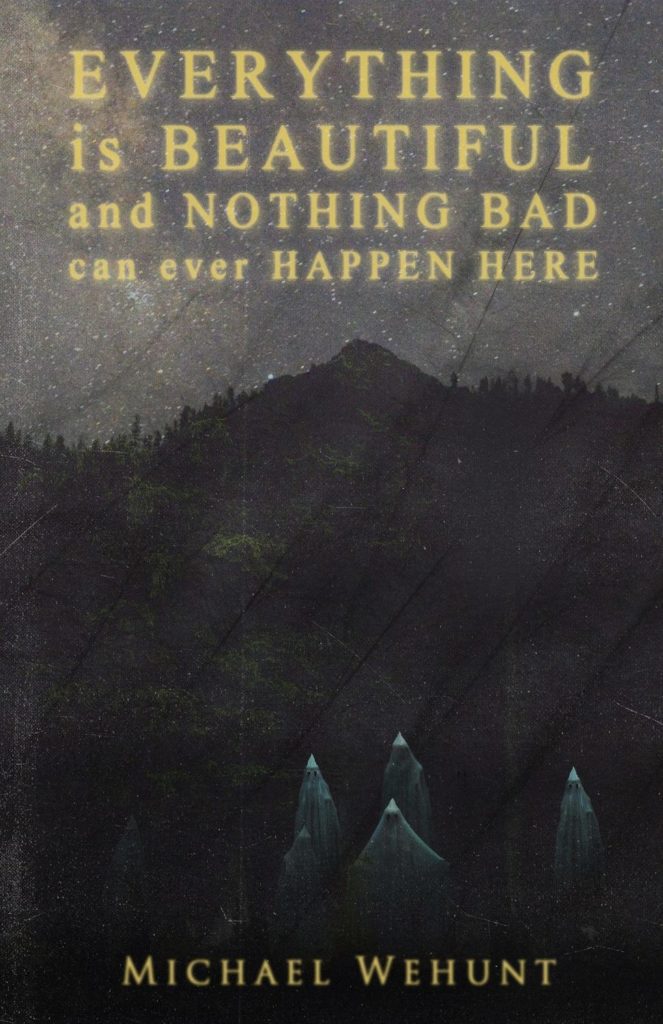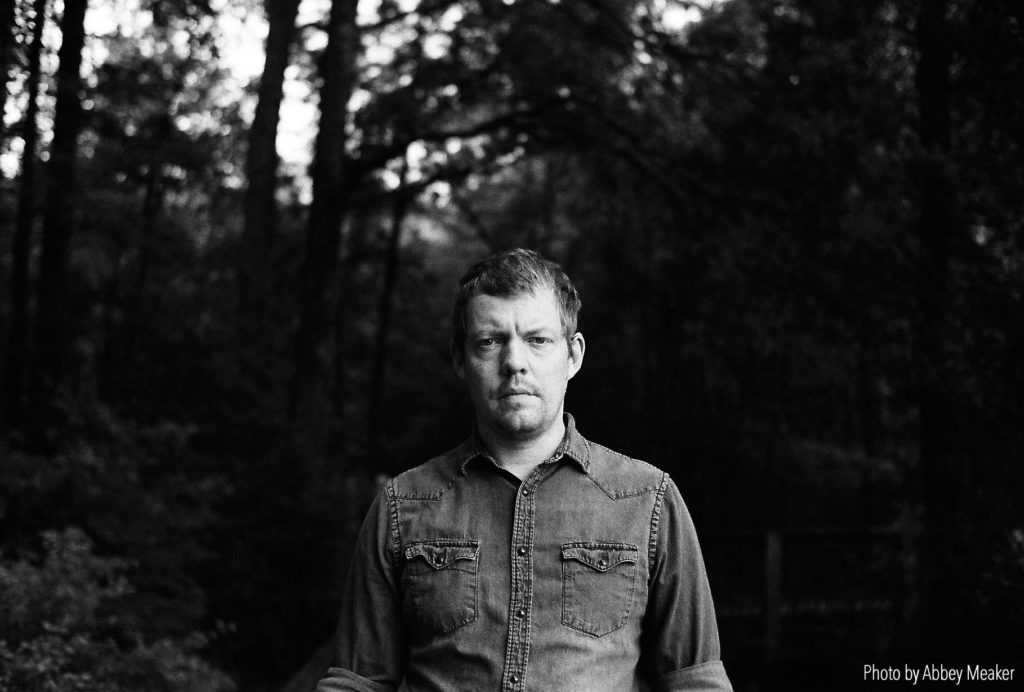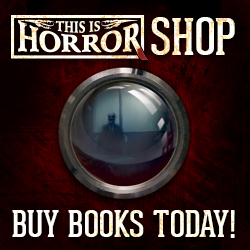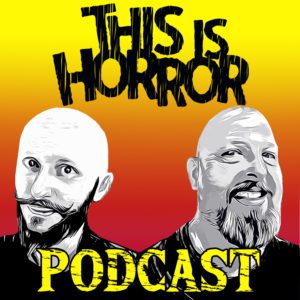The fifth book in the Charitable Chapbook line from Nightscape Press, Michael Wehunt’s Everything Is Beautiful and Nothing Bad Can Ever Happen Here, is an unflinching, poetic novella that, as described in our recent review of the book, “holds a mirror up to a modern America which, despite making some progress, still finds itself haunted by a poisonous past and struggling to break free”. Addressing the disturbing topic of white supremacy in modern-day America using his own brand of weird literary-horror, the author felt drawn to the power and potential of the publishing model presented by Nightscape Press to help a very worthy cause. We are proud to welcome Michael to This Is Horror to give us some insight into this exciting new project, as well as his other work and writing process.
Can you tell us about the origin of the new novella, Everything Is Beautiful and Nothing Bad Can Ever Happen Here, and how you came to be involved in the Charitable Chapbook series from Nightscape Press?
MW: Thanks for having me, Thomas! A lot of my stories start with an image in my head, or sometimes an impression that is like an image, and an atmosphere begins to paint itself around it. This novella was no exception: a woman in her back yard looking through a knothole in a fence, near dusk in a mountain town. Why was she doing this? What did she see? Considering that I am Michael Wehunt, it was probably going to be unpleasant in some way. It didn’t take long for me to see this story wanted to look at white supremacy in America, so yes, unpleasant indeed.
I finished the novella, and it had been sitting on my hard drive for several months, penciled in as an original story in my next collection. But when Robert and Jennifer Wilson of Nightscape reached out to me about a potential Charitable Chapbook, right away it seemed like something I had to do. The subject matter of this story rang out at the opportunity to generate a pretty substantial amount of money for a charity of my choosing (the cover price is steep so that a significant portion of each copy is donated—a minimum of $10, followed by 40% of each ebook sale when the Kindle edition is released), so I offered it up. If a story about the ugliness of white supremacy, violence, and Confederate monuments could raise awareness and support for the Southern Poverty Law Center, which would then use that money to fight that ugliness, it felt like a no-brainer.
When Nightscape decided to bump the limited-edition print run up to 250 copies, I was both excited and very nervous. What if it never sells out? With a $30 price point, it’s asking a lot of every single person who buys a copy, after all (as well as earning my mystified and powerful gratitude to the many people who have already purchased one). But they felt this story deserved a chance to raise even more money for the SPLC and touch more readers, if possible.
The interior artwork by Luke Spooner and the cover by Don Noble are wonderful. The 12 interior colour illustrations relate directly to the surrounding text while the cover is evocative of the creepiness of the story held within the pages. To what extent, if any, were you involved with the art?
MW: Yes, the art is stunning! Luke does the interior illustrations for all of Nightscape’s Charitable Chapbooks, so I only saw those after the fact. Luckily, I knew I had nothing to worry about. I could have let Don Noble run free with the cover and been just as blown away, I’m sure, but since I had the opportunity to stick my nose into the process, I couldn’t resist. So some of the art concept and font design came from a back-and-forth between me, Don, and Robert. In the end, though, it was all Don’s talent.
One side note about these two artists: They’re both white men, and after some thought, I decided it would really serve this story rather than detracting from it. Since the author is a white man, and the story is from a decidedly white perspective, it all seemed to click together as a group voice acknowledging that we only have the right to speak about these things if we turn inward and examine ourselves as well.
Other than the enjoyment of the story, what one thing would you like readers to take from the novella?
MW: I hope readers think about the complicity that’s inherent in daily life. Like so many evils in our culture, white supremacy has crawled out of the shadows in the Trump era, and yet the vast majority of us (and I primarily mean white people when I say us) are vulnerable to apathy. We cling to complacency and the desire to sweep it all under the rug, we just want to get through the day, we just want to watch some TV and turn our brains off, we just want our lives to stay pretty much the way they have been, please just leave us alone. We’re not the bad guys, so stop lumping us in with them, it’s offensive.
And yet—we sort of are the bad guys. Most of us don’t mean to be, but we’re okay enough with the bad guys to end up siding with them even when we don’t intend to, even when their beliefs horrify us on an intellectual level. We can’t let this man turn the dynamic into white vs. non-white. It’s up to us to stand against the ugliness in the world. This applies to climate change, the astonishing wealth inequality in the world, and many other crucial aspects that aren’t gaining anywhere near the traction they should. The problem is that it’s so easy not to stand up.
Apathy is such a negative word, but it has a powerful allure—and not just in the US. It seems to me that because white supremacy is more visible now, we have the opportunity to fight it more effectively. To use our privilege to grow and help. But at the same time, it can feel so overwhelming that we want to stick our fingers in our ears. That’s where the character of Bea Holcombe came from. She is the marrow of this story, but so are we. I wanted to own the part of her that is a part of me, and I sincerely hope readers will take a part of her away with themselves.
Your first collection, Greener Pastures, has been well received by horror fiction fans, garnering praise and award nominations (both in English and for the Spanish translation – Un Lugar Mejor, translated by José Ángel de Dios). Did this have any effect, positive or negative, on your subsequent work?
MW: There’s been a whole domino chain of effects, many of which I’m still processing. More people have read Greener Pastures than I ever thought possible, and going on four years later, this still feels weird. Maybe the biggest effect is the freedom it has given me, the feeling that I can keep doing what I do without overthinking it. It seems that people trust me to write things worth reading.
 There’s a self-imposed restrictiveness working against that freedom, though. I’ve seen wonderful comments about every single piece in Greener Pastures, but certain stories come up much more often than others (the title story and “October Film Haunt: Under the House” in particular). I’ve always been deeply (primarily, really) fascinated by the line where literary fiction meets genre fiction, and the ways in which they can bleed together and not quite be either/or. But if my more overtly horror stories are the ones being discussed most often, doesn’t that tell me I should lean more in that direction, where the literary/genre seam is more visible? The answer I’ve come up with is … kind of.
There’s a self-imposed restrictiveness working against that freedom, though. I’ve seen wonderful comments about every single piece in Greener Pastures, but certain stories come up much more often than others (the title story and “October Film Haunt: Under the House” in particular). I’ve always been deeply (primarily, really) fascinated by the line where literary fiction meets genre fiction, and the ways in which they can bleed together and not quite be either/or. But if my more overtly horror stories are the ones being discussed most often, doesn’t that tell me I should lean more in that direction, where the literary/genre seam is more visible? The answer I’ve come up with is … kind of.
Maybe I use story paint that’s a touch darker than it used to be. Maybe I could claim that this “praise” has made me feel like I’m a little more “pigeonholed” than I once was. But if anything, it’s strengthened the bond between me and all the wonderful people who have read my stories. Thinking about readers has led me into a fascination with the mechanics and symbiosis of storytelling, breaking the fourth wall in ways that feel new to me, which has led me to some interesting stories. As for the future, I think many of these lovely people will follow me into whatever adjacent pigeonholes I wander into, which is the greatest residual effect my subsequent work could ask for.
We understand you have (at least) a second collection and a novel ready for publication. What can you tell us about them and their possible release dates? And is there any other forthcoming work you can discuss?
MW: Well, almost ready. I’m nearing the end of editing my first novel, which has been a long process due to various time constraints, and along the way I’ve been sitting on my completed second collection because I want to decide what to do with the two books simultaneously. I can’t say much about possible release dates because that’s still on the horizon—no editors or publishers have even seen either book at this time. I can use the word soon and cling to it, but a lot of variables are still unknown.
For my cliché this-meets-that elevator pitch, I once told someone that the novel is Didion’s The Year of Magical Thinking meets The Omen, and I still like that mashup. It’s a found-material story in which a grieving mother attempts to make a documentary film about an elderly man who was once the center of an Appalachian doomsday cult.
The second collection will hopefully be a logical evolution from my Greener phase, with two notable differences. The stories are longer, with at least one novella and a couple of novelettes, and will likely add up to an extra hundred pages compared to the first collection. Secondly, I’m making a conscious choice to include no Lovecraftian/cosmic horror. I enjoy having the cosmic rub up against the peripheral membrane of my stories, but that won’t be a driving force here. There were other horrors to examine, and I think (hope) these newer stories work really well together. It will feature at least one previously unpublished story, a novelette titled “Vampire Fiction.”
As for individual stories, my cupboard is bare except for a new one called “A Heart Arrhythmia Creeping Into a Dark Room.” It will be published in the anthology Miscreations: Gods, Monstrosities & Other Horrors in February. After the novel is finished-finished, I’ll need to hurry up and write some more short stories.
How did your writing career change when you received representation from a literary agent?
MW: Since I’d never even started a novel when I signed on with my agent, the biggest and most obvious change was that the need for one shifted from a nebulous “someday” to “um, now, I guess!” And now I have one, and the itch to show it to people.
Another change has been the simple fact that this person believed in me—enough to professionally invest in my future as an author when my body of work was so small and untested. Having a supporter like that in my corner has gotten me through some dark days. Perhaps paradoxically, he’s helped me slow my brain down to match the pace of my life and stop worrying so much about losing momentum and not producing and publishing enough.
As far as a tangible impact on my career, there’s rarely a need or reason for an agent to get involved with individual short stories or novellas (especially in horror markets), so not much has changed there. He’s offered me valuable perspective about the marketplace and the way things work, but I’ve still been handling everything on my own to this point. Of course, that will hopefully no longer be the case in a few months.
How do you balance the creative side of life with a full-time day job and other obligations?
MW: With great difficulty and an ever-present debilitating fear that I’ll never be able to write enough, regardless of what I just mentioned above. That’s pretty far from “balance,” though, isn’t it? I constantly daydream about being able to write full-time, and I’d settle for having a less demanding day job that would afford me some additional time and mental space. But as long as those are daydreams, I try to stick to the formula that let me write a 110,000-word novel first draft in nine months: 500 words a day, six days a week (with Sundays off for that crucial work/life balance). It’s never overwhelming from a stress perspective, and it produces results.
You mention the importance of writing a certain number of words every day, but have also mentioned being forced to take a break during the writing of the first novel (authors will invariably encounter problems during composition). Do you use any techniques to motivate yourself on days when the words don’t come so easy?
MW: In my case, I had to put writing aside entirely for a long while. Life made that necessary, so it wasn’t a matter of being motivated to write. I missed it. I think it made me stop taking it for granted. But there are still plenty of days now where I want to escape my brain. Stress is a big creative barrier for me.
I can’t say I have any tricks, exactly. But I will often try to read things that are roughly as long as what I’m writing. It helps me narrow my focus and think more actively about my WIP, and I find it frequently inspiring. If I’m writing a short story, I’ll work my way through a collection, for example. Since I’ve been editing my novel for the last several months, I’ve been reading novels almost exclusively. And not just novels but novels of a specific length—this is because as a first-time novelist, publishers are going to be less likely to take a chance on me if my book is more than, say, 280 pages, so I don’t want a 450-page novel impacting how I think about my own plot. That author is allowed to do things I probably won’t be, at least not for a while.
Side note: I desperately miss short fiction and can’t wait to devour some soon.
What has changed about your writing process between your first publication and your most recent?
MW: It’s become more about doing what I can in whatever chunk of time I have. Fortunately, setting the right mood isn’t as important as it once was. I usually don’t have music playing or the right trinkets arranged around me. There are fewer rituals. I tend to get most of my day’s writing done on my lunch break at work, and since there’s not a single place in the building that provides solitude and quiet, I’ve been forced to figure out how to write in unfriendly environments.
I’ve always wandered into stories with a mental flashlight that only reveals what’s just in front of me. I have to trust myself to build everything around it in the best possible way. Somehow this continual sense of discovery, scene to scene, horror to horror, works for me, so my brain must know what it’s doing even if it won’t explain it to me. Everything Is Beautiful and Nothing Bad Can Ever Happen Here feels to me like the closest thing to meticulously plotted I’ve ever written—with a deliberate story architecture that came from blueprints—but I went into that one blindly as ever. Maybe I will always wander into the dark. Maybe I have to. But I’m going to try to fully outline my second novel and see what happens.
What about writing your particular brand of weird literary horror do you enjoy the most?
MW: The easy answer to this question has always been something about that line I mentioned before, the one where horror and weird fiction rub up against literary fiction, that part of the Venn diagram where both disciplines and sets of intentions are the same to me. (It’s so easy to say “literary” with a sneer, but I never do. I believe it’s nearly as distinct a label as horror, just as valuable, and often more malleable.) And that’s still my primary answer. I love the craft of sentence rhythm, of the breath-taking paragraph, of sensory imagery I have to linger over. Rich, earthy prose that’s never overwritten, never purple, that uses the plainest words and is more beautiful because of it. Characters that are pockmarked with human texture. All the different ways to describe the moon. Putting all this emphasis on the words themselves, and still having this other part of my brain focused tightly on keeping the story compelling and exciting.
But I also adore creepiness and dread, which are exclusive to neither plot nor craft. And that lack of exclusivity is crucial. I don’t always narrow my lens to such a pinhole that creepiness is my only aim, but that love is always there, whether foregrounded or peripheral. Hearing people say that a certain story gave them chills or made them scared to take their dog out before bedtime is the most wonderful thing. I live off that like sustenance, and it gives me one more reason to put my creepiest mask on for the next story (that author-reader symbiosis again). I think very few authors can truly write dread because it can’t be nurtured in the plot alone, and this is something I always want to strive toward. I want to get closer and closer, into the atmosphere and into the words themselves, until the hair on your arms feels me right behind you as you read.
Do you consider it beneficial to interact with other authors in the writing community, whether online or in person?
MW: I think it’s another thing that comes down to free time. Are you taking writing time away from yourself by scrolling through social media feeds? I’ve actually reduced my online presence pretty substantially over the last year or so, particularly as an author, though I still try to pop in a couple of times a day to stay marginally connected. This is partly because of time constraints (you could title this interview AUTHOR COMPLAINS ABOUT NOT HAVING ENOUGH TIME, although I sincerely hope you don’t!) and partly because of how toxic social media can be.
On the one hand, you have political strife and its impact on being an “artist” of any kind as well as a member of society. On the other hand, I see authors who seem to pretend that the world is not in danger, or that this danger isn’t as important as their new book, and while one must be mindful that the way each person expresses themselves publicly is their own decision, I can’t deny that this has an effect on how I feel about social media as an author. My observations seem to inevitably tie into the apathy I mentioned earlier.
But we all must do the best we can with the circumstances we’re given. For those starting out, it’s important to get to know the people in “the scene,” and where I think this interaction is truly beneficial is in the little things. Water cooler stuff. Don’t only promote your own work. Don’t even promote your own work half the time. Commenting on posts, liking and congratulating announcements, sharing book release links, being sad when someone’s pet has passed away…just like it would be in nearly any industry or group of friends, simply being a nice, engaging person is key. Let your personality shine through.
Unfortunately, there’s FOMO, as the kids say (do the kids still say this?). The fear of missing out. This sense that the less time you spend on social media, the less visible you are and the less “part of the scene” you are. It’s unfortunate, but someone who has a day job with a lot of downtime will stay in the minds of social media users more than someone whose job doesn’t allow them to be plugged into the world. People are drawn to those who are present and engaged. But again, do what is healthy for you and your life outside the screen of your device. Write the best stories you can, and be wise about where you publish them. Be as present as you’re able, and if you get to know some people online, guess what? You’ll have some new friends, and that’s more important than most things.
Because of social media, I feel like going to conventions isn’t nearly as important as it probably was in the past, particularly from a networking perspective. And being able to attend them is often another brick in the wall of privilege—there’s your geographical proximity, the cost of traveling, the ability to take time off of work, and other factors that prevent those who could benefit from attending. I don’t go to conventions as often as I used to, but when I do, I’m happy because I get to see some folks I consider to be my friends, and I typically just hang out rather than follow any sort of agenda.
Could you share some of your favourite books and/or authors from the past year?
MW: As I already mentioned, I’ve read very little short fiction in the past year and have missed it dearly. But I did enjoy Brian Evenson’s Song for the Unraveling of the World and Nathan Ballingrud’s Wounds. My favorite novel was probably Ghost Wall by Sarah Moss, which is a strictly literary book that has folk horror hovering around its edges. I loved Paul Tremblay’s The Cabin at the End of the World. Helen Phillips’ The Need was fantastic and worthy of its National Book Award longlisting, and although it lost a bit of its power when it narrowed to a single focus following an initial 50 pages that had me trembling with excitement, I still recommend it. John Hornor Jacobs’ A Lush and Seething Hell pairs two wonderful novellas.
All of this comes with a huge asterisk: My TBR pile is…big. You can see the curve of the earth from the top of it. So many books that might have been mentioned here in a perfect world are still waiting patiently for me. I’m looking forward to Carrie Laben’s novel A Hawk in the Woods and Sarah Read’s collection Out of Water, just to name two from 2019. (Not to mention all the unreleased books looming on the horizon, such as a new Christopher Slatsky collection.)
What brings you joy?
MW: My partner. My dog. A good spiced ale. Pajamas at 6:30 p.m. after a long commute home from work. Reading prose that makes me shiver with delight because it’s such a rare, rare thing. The music of Stars of the Lid. The poetry of Mary Oliver. The poetry of Lucille Clifton. The stories of Flannery O’Connor. The novels and writings of Toni Morrison. That feeling when I wonder how the hell I wrote what I just wrote. The gratefulness for every single reader. The film Hereditary. The film Don’t Look Now. Naps on rainy afternoons. The cathedral of the woods. Decaying music. The first day of fall. The simple things.
Michael Wehunt grew up in North Georgia, close enough to the Appalachians to feel them but not quite easily see them. He did not make it far when he left, falling sixty miles south to the lost city of Atlanta, where he lives today, with fewer woods but still many trees. He writes. He reads. Robert Aickman fidgets next to Flannery O’Connor on his favorite bookshelf. His short fiction has appeared in various places, and his debut collection, Greener Pastures, shortlisted for the Crawford Award and a Shirley Jackson Award finalist, is available from Apex Publications. Visit Michael’s website at michaelwehunt.com
Buy Everything Is Beautiful and Nothing Bad Can Ever Happen Here by Michael Wehunt
Learn more about the incredible work being done by the Southern Poverty Law Center
THOMAS JOYCE











